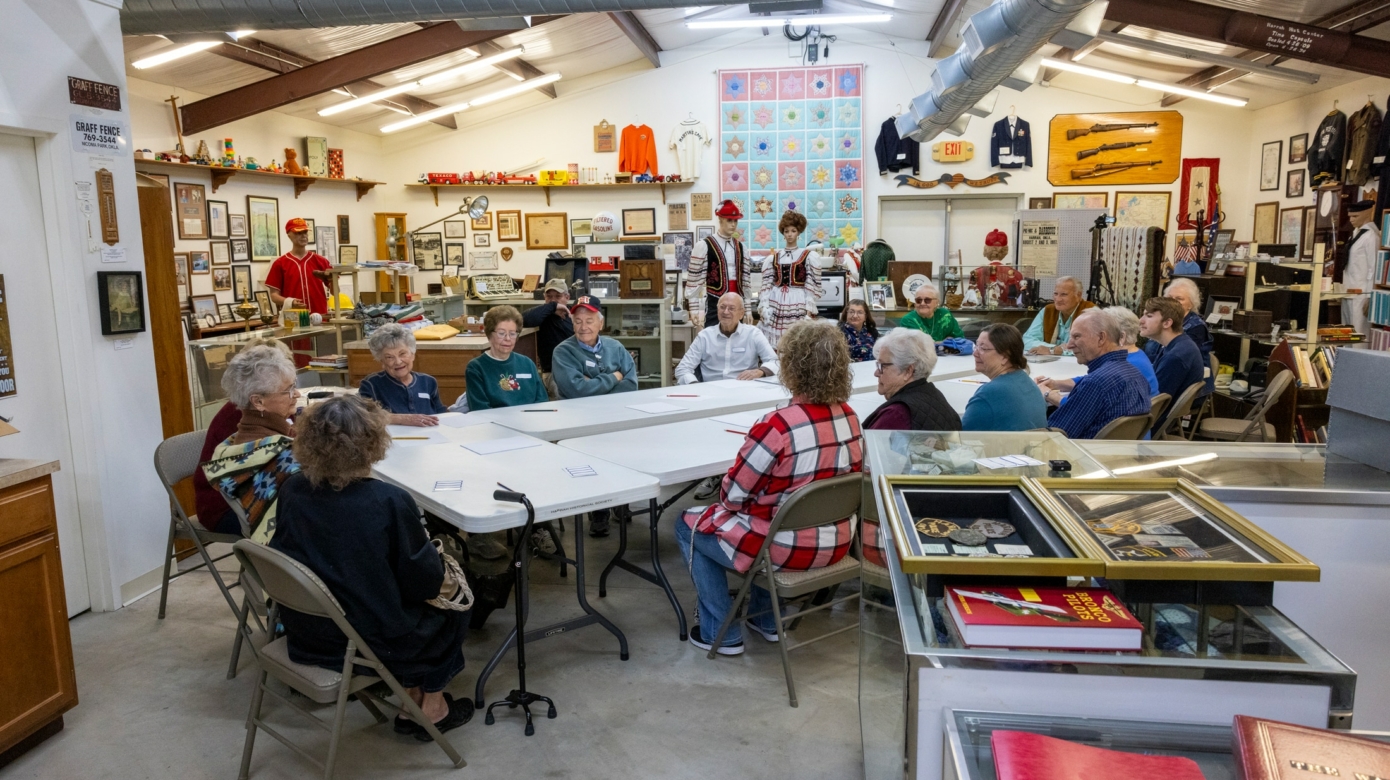A discussion at the Citizen Potawatomi Nation Family Reunion Festival has motivated members of the Tescier family to ensure that Potawatomi history is included in a local historical society’s museum.
Gary Helberg said when he and his mother, Glenda Payne, visited the Harrah Historical Society’s Museum in Harrah, Oklahoma, they noticed the museum didn’t have many items representing Potawatomi history.
The land for the town’s original site was donated by Tribal member Louis Navarre, who was first to arrive at his allotment in the 1870s. While a plaque outside the museum mentions Navarre, the town was later named in 1898 for Frank Harrah. Navarre Street is prominently located near the center of town.
Helberg said he and some of his Tescier cousins realized during the 2023 Family Reunion Festival that some of their elders who best remembered the family’s history have walked on. With their passing, important pieces of history could be lost, he said.
“My mother and I, over the last few years, we had been looking at our background and our family on the Potawatomi side,” hoping to preserve as many memories as possible, he said.
Local history
The goal to preserve their family history spurred Helberg and his mother to stop at the Harrah Historical Society’s Museum. Glenda Payne is knowledgeable about the town’s ties with the Potawatomi. Both sides of the Helberg family grew up around Harrah.
They admired the museum’s collections, but they noticed that other than the plaque outside the museum that referenced Louis Navarre, there was only a small booklet about Potawatomi history.
“We were really enjoying the facility. I was just noticing, there wasn’t anything on the background, the heritage of our Nation there,” he said.
Helberg recalled the conversation at Family Reunion Festival and decided the museum would be a great location for Tescier relatives to gather and discuss the Navarre and Tescier families’ histories.
Next, he discussed the idea with Lester “Bud” Merritt, Helen Kusek and other cousins. They agreed it would be important to explore their family’s history and share that information with the Harrah Historical Society.
“We decided, let’s get together somewhere and just talk about our family and maybe, with that historical society, we could do a little research. They might have some information that would be helpful. That was the initial idea,” Helberg said.
He hopes other historical societies will consider including Tribal members as they gather information and artifacts and put together displays. Helberg believes the cooperative effort would enhance the visitor experience and give local families a place to share their relevant historical documents, photographs and more.
Future efforts
While the process has just started, Helberg is hopeful that it will lead to future cooperation between CPN and local historical societies or museums.
“I hope more of our people can go and see (their local museum). Local museums have a lot of information in their books and articles,” Helberg said. “I also hope local museums can come and see our Cultural Heritage Center because it’s just spectacular.”
He urges historical societies to consider adding a standalone Potawatomi history exhibit. Helberg believes this could be possible if a local museum worked with the Cultural Heritage Center to either create their own display or ask area Potawatomi families to possibly loan items for an exhibit.
Helberg imagines that eventually, a CPN volunteer or Native American history major could help curate the standalone Potawatomi exhibit, periodically updating it with new artifacts.
Having a Potawatomi perspective could help broaden the museum’s reach and fill in any possible gaps in an area’s timeline, he said. While many towns like Harrah may have ties to Potawatomi families, they may not have enough information to share that history.
“We’re just one family, right? There’s so many more out there (that need to be included). I mean, the (family) name may be up there, but nobody ever puts the two together,” he said.
The staff at the Harrah Historical Society Museum were receptive to Helberg’s idea and agreed to host the inaugural Tescier/Navarre meeting. Museum volunteers were present and the group discussed Harrah families with Potawatomi heritage.
CHC Family History Specialist Czarina Thompson, a Tescier/Bourbonnais descendant, attended to share additional Potawatomi history. In addition to Helberg, Merritt and Kusek, Helberg’s sister, Lyndee Runyon, and Kusek’s daughter, Cerise Douglas, also attended.
Helberg hopes more Potawatomi families will get together and find creative solutions to preserve family history for future generations.
“I know museums are always kind of limited on space or personnel to manage it, but there’s just so much more (history) out there that is just going to disappear if you don’t get a hold of it,” he said. “We’re definitely going to get together again and probably continue meeting. Once they get into a group and start talking, that’s where you pull out some of the information.”
To begin exploring family history, visit the Cultural Heritage Center website.

